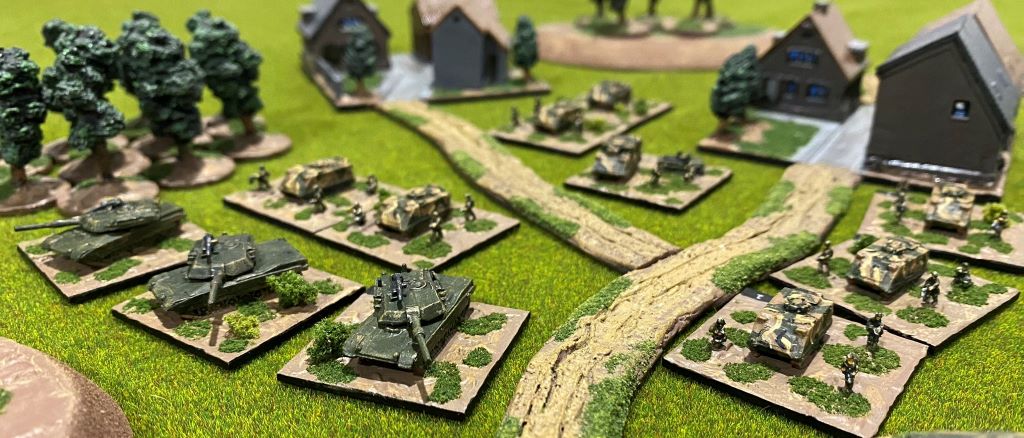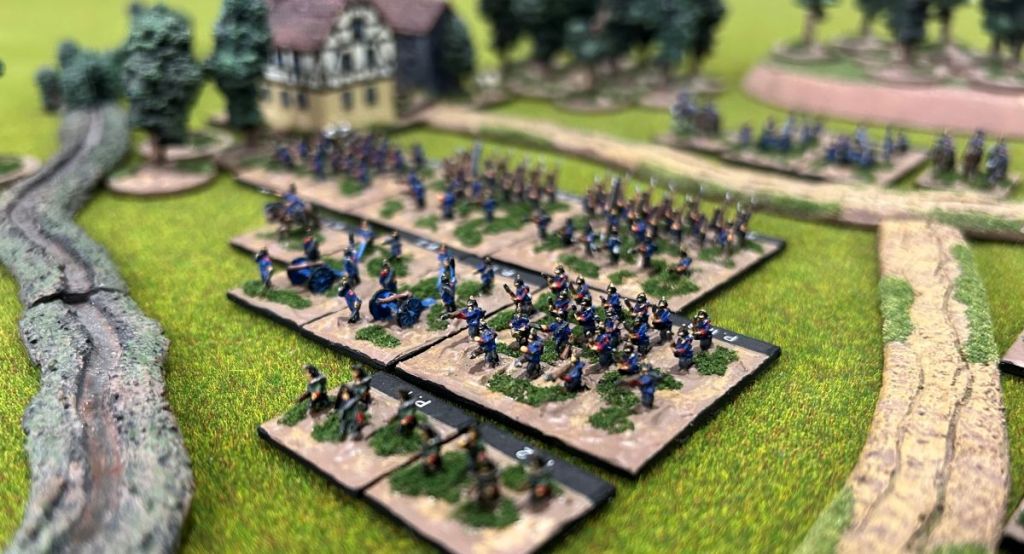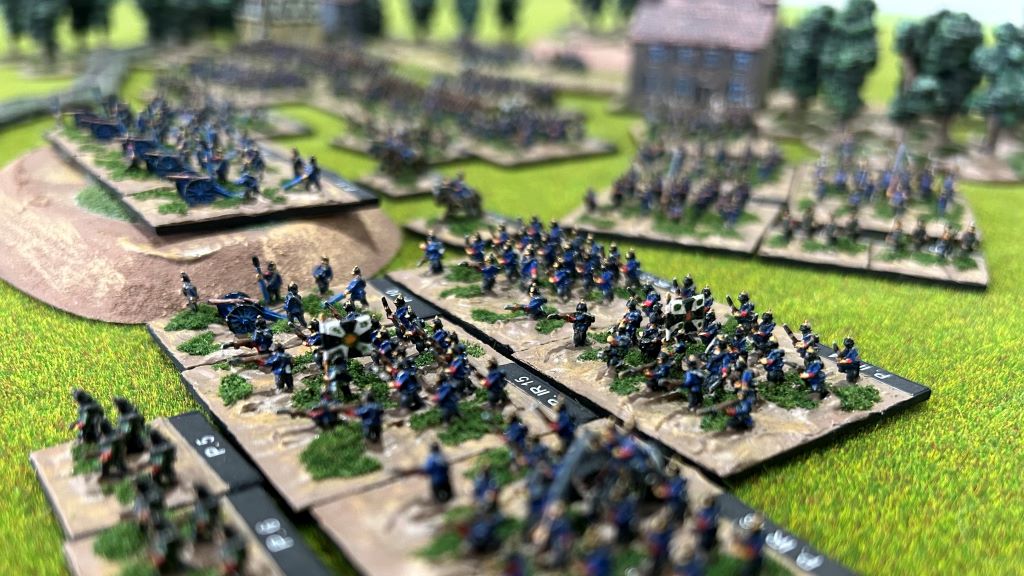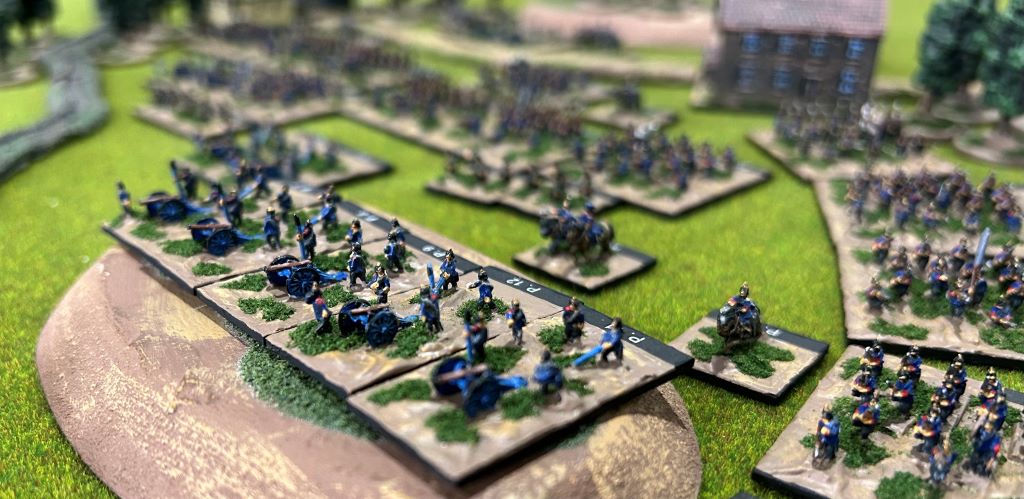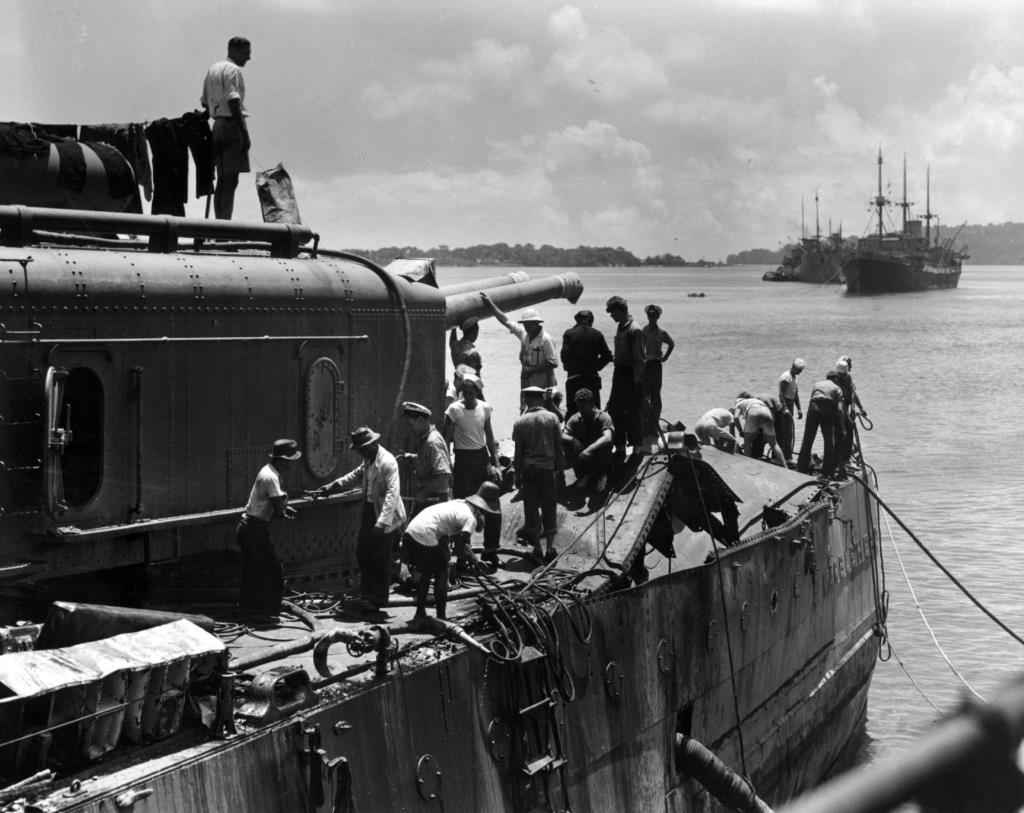The terrain is placed, the troops are deployed and players are due to arrive. Will the game produce an enjoyable event, which players will talk positively about for weeks, or will it be a disaster? Such is the potential for any game, but in some ways the stakes are higher for those involving a number of players. After a most enjoyable multiplayer game a week ago, involving six players, I found myself pondering what makes a good multiplayer game and what are the potential pitfalls.
Large multiplayer games can be a little like campaigns. They can be full of promise but sometimes the result is far less successful than intended. Over the years I have heard complaints around games taking too long to complete, fortunately not mine, with players standing around twiddling their thumbs as the game progresses at the speed of drying paint. Likewise I have heard reports of disasters, where some players have been clearly unhappy. Most notably on a podcast where the presenter was clearly frustrated that having painted both armies and worked out the terrain one player completely lost the plot effectively undoing the hours of work of the host. Clearly neither is ideal, so what is a successful formula, or at least what are some of the considerations that organisers may wish to consider?
Before I wax lyrical the astute reader may be asking what makes me qualified to voice my opinion on such things? Being this is on the internet then perhaps I don’t even need to be qualified to voice my opinion, but lets pretend I have some experience. Arguably a reasonable position, given I tend to run multiplayer games perhaps twice a month. My games tend to involve between four and eight players with four being more typical since the time of Covid.
As to our analysis, lets start with the rules. Firstly, what is the complexity level of your rules and are they suitable for a multiplayer games? Some rules are very detailed and this detail takes time to progress through. Often players need assistance with some of the detail. In my view such rules are not suitable for multiplayer games. In contrast some rules are simple and can be easily grasped. They have simple mechanics and allow the turns to be progressed through quickly. This tends to mean that a number of players can be actively involved simultaneously. Therefore I suggest you select your rules carefully. As an example one of the simplest rules I use are Wings of Glory. These are ideal for multiplayer games as the rule complexity is low and the pace of the game high. This means that players are active and involved every turn.
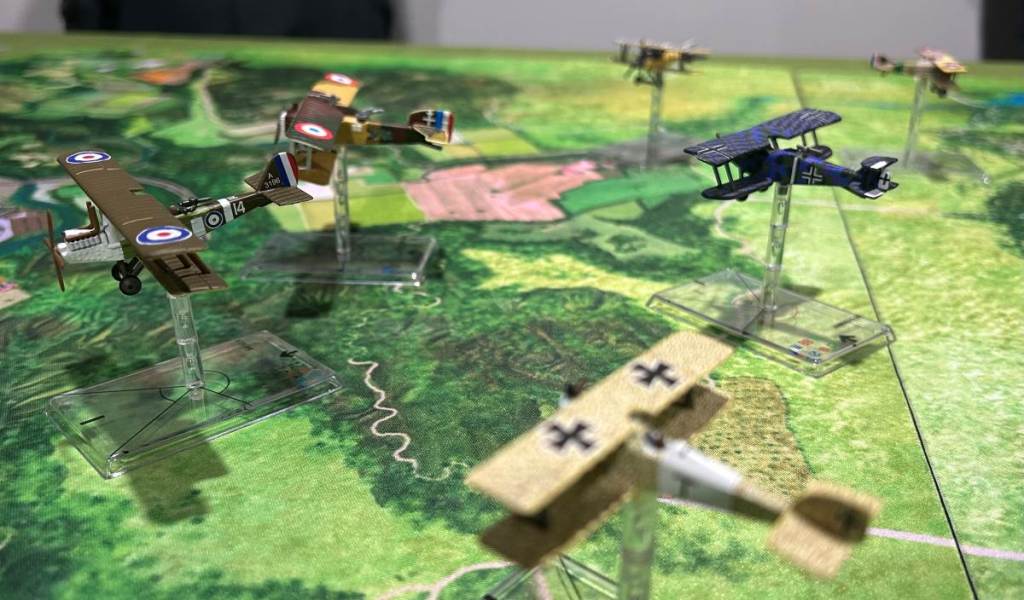
Another aspect of rules often discussed is friction. But what is friction? Mr Google suggests it’s the resistance one object encounters when moving over another. In wargame terms it’s the resistance imposed on a player to achieve the desired outcome. The most common friction in modern games is what I will “command friction”. In a game with one player per side this command friction can be introduced by game mechanics limiting moves in parts of the battle. However, in a multiplayer games I would suggest that with several players command friction is inherent, simply because different personalities adopt different actions at different speeds. The cautious player will want to deliver a well coordinated attack while the rash player will be more aggressive perhaps intending to seize and maintain the initiative. In my view rule systems that are designed for one other player per side do not always scale to multiplayer games. In addition to command friction there is also “battle friction”. Here events on the table can change quickly and a well considered plan can begin to fall apart. Reserves are required to regain the initiative. Here some rules will work well and others can be a little more formulaic.
Next is the game size. When planning your multiplayer game consider the time you have available against the size of the game you wish to play. Next consider if the players have enough miniatures to command, but not too many. There is a balance here and sometimes experienced players can command more miniatures than less experienced players. But you need to ensure that all players have an ability to be involved. As an example in last week’s game the French had several corps on the table divided among the French players. We had one player commanding the centre, one the left and one the right. The reserve didn’t have a commander defined as the reserve would be divided between the three as determined by the unfolding game. This worked well. Having a player commanding the reserve may have resulted in that player not being heavily engaged.

Assuming the rules are suitable and the game scaled for time and miniatures, what of the other components of the game?
As a game host I often feel I have a responsibility for everyone enjoying themselves. A number of years ago, when organising a competition, I was reminded by a friend that it was not my responsibility that everyone enjoyed themselves, but rather that was an individual player responsibility. My responsibility was organising the event and laying the ground work for the games so they can be enjoyed. Multiplayer games by definition involve a number of personalities. Unfortunately not all the players will get on and on occasion some will be having a particularly bad day. This could be because of work or life stress, or perhaps it is just their disposition. Over the years I have had a number of outstanding games and occasionally one that hasn’t gone so well. People have lost the plot, got grumpy and even thrown in the towel mid-game. My suggestion is if you are planning a multiplayer game choose your players carefully. Equally, if you are participating in a game hosted by someone else just remember that if you have a bad day it may impact other peoples enjoyment. As a player you have a social contract to be polite and considerate, both to the other players but also to the host.
One point I mentioned previously was game pace. The pace of the game is important, especially so if you are trying to prevent players standing around for long periods while the game is still progressing at the other end of the table. Assuming you have selected your rules carefully, that is they are not too detailed, someone needs to keep the pace of the game moving. This could be an umpire or it may be the host. One of the best examples I have seen was a refight of the Battle of Stones River where I had the pleasure of being involved while visiting Tennessee. Here the umpire managed to have 12 players involved and moved the game through successive turns to resolve the battle in a single evening. Now, I I haven’t achieved such momentum, in part because I don’t want to always be a dedicated umpire but rather want to also move the miniatures I have spent many hours painting. However, as the host I do try and keep things moving. To aid this players need to be responsible for their own troops. It is easy for a game to slow as one player takes over and tries to manage the battle in other sectors. My advise is to try and resist this and let the other players make their own mistakes. I admit this is harder than it sounds and I need to remind myself of this on occasion. It is obvious that even in our group some players really do struggle with letting go. If you do you will get plenty of “command friction”.
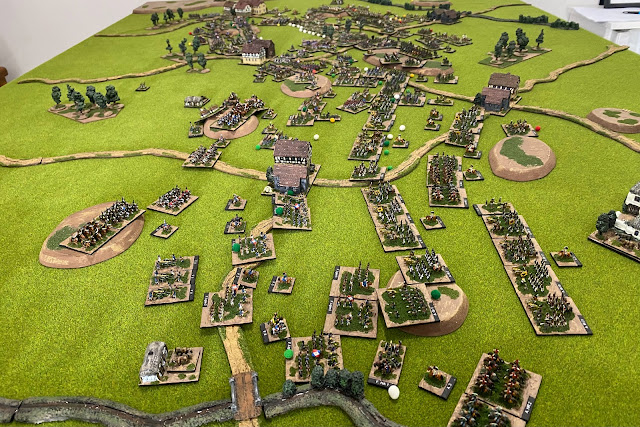
Multiplayer games are a significant part of my wargaming. While I enjoy games against a single opponent a multiplayer game really provides an opportunity to share my gaming time with like minded friends. They allow me to fight larger battles or enjoy the some of the challenges of command tension as people attempt to resolve tactical issues, sometimes in a different way than I would. Multiplayer games really do have much to recommend them and if you havent played in one I would recommend you try.
I am aware this post is rather long. However, I do hope that the above thoughts are useful, especially if you are considering hosting a multiplayer game. Perhaps you have other suggestions or you disagree with me on some of the above points. Do please consider posting your thoughts on the merits of such games, as well as your suggestions on running them, in the comments below.


